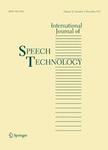版权所有:内蒙古大学图书馆 技术提供:维普资讯• 智图
内蒙古自治区呼和浩特市赛罕区大学西街235号 邮编: 010021

作者机构:Department of Computer Science and Engineering University Institute of Engineering and Technology Chhatrapati Shahu Ji Maharaj University UP Kanpur India
出 版 物:《International Journal of Speech Technology》 (Int J Speech Technol)
年 卷 期:2024年第27卷第4期
页 面:1013-1026页
核心收录:
学科分类:0810[工学-信息与通信工程] 08[工学] 070206[理学-声学] 0702[理学-物理学] 0812[工学-计算机科学与技术(可授工学、理学学位)]
主 题:Convolutional neural networks
摘 要:This research article introduces a novel approach to text-independent speaker recognition by integrating Mel-Frequency Cepstral Coefficients (MFCC) and Bidirectional Long Short-Term Memory (Bi-LSTM) networks, with noise removal facilitated by Convolutional Neural Networks (CNNs). The primary objective is to upgrade the robustness and precision of speaker recognition systems in real-world environments where background noise is prevalent. The proposed method begins with the extraction of MFCC features, which effectively capture the timbral characteristics of the speech signal. To enhance these features, we employ a CNN-based noise removal mechanism that reduces background interference, thereby improving the quality of the input signal. The denoised MFCC features are then fed into a Bi-LSTM network, which excels in modeling temporal dependencies and capturing long-range contextual information inherent in speech data. Extensive experiments were conducted on publicly available datasets, demonstrating significant improvements in speaker recognition accuracy under various noise conditions compared to traditional approaches. The integration of CNN for noise removal and Bi-LSTM for temporal feature modeling showcases a synergistic effect, leading to a more robust and reliable speaker recognition system. Our results underscore the effectiveness of combining advanced feature extraction, noise reduction, and deep learning techniques for enhanced speaker recognition in challenging acoustic environments. The accuracy of the proposed method is found to be 98.17% at the Signal to Noise Ratio (SNR) level of 30 dB. © The Author(s), under exclusive licence to Springer Science+Business Media, LLC, part of Springer Nature 2024.